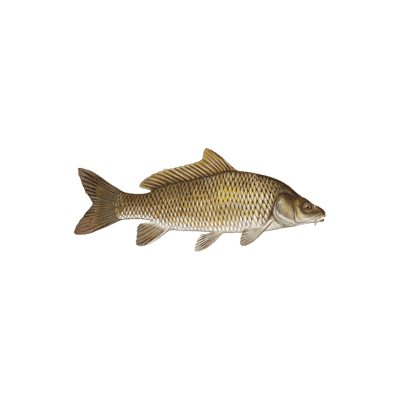Common carp are heavy fish. Their deep bodies arch along the mid-section. They have a lengthy dorsal fin which extends along the back. The body is typically brownish to bronze colored. The forked tail fin is usually reddish in color. Common carp sometimes live around 45 years and can weigh over 75 pounds.
Common carp are omnivorous. They are able to subsist exclusively on a diet of aquatic vegetation, but prefer to scavenge the bottom for insects, crustaceans, and other invertebrates.
Carp are opportunistic feeders and often take advantage of seasonal food sources. When opportunities arise, carp will feed on fallen berries, flying insects, or other foods.
Common carp were brought to the United States in 1877, being considered a highly valuable fish. In the later part of that century, they were distributed widely throughout the country by the government as a food fish, although today they are eaten less often.
Their introduction in North America led to negative environmental impacts and they are sometimes considered to be an invasive species. Millions of dollars are spent each year by natural resource agencies to control common carp populations in the United States and Canada.
Today, common carp are one of the most widely distributed fish species in North America, ranging from central Canada to central Mexico, and from coast to coast.
Common carp are easily spotted in shallow water as they often “tail”. When feeding in clear water, their constant digging gives away their location, as a cloud of silt usually indicates one or more feeding carp.
Although adult common carp have few predators, juveniles are preyed upon by top level predators, including pike, bass, and others. They are also consumed by herons, ospreys, otters, and other wildlife. Carp eggs and fry are a favorite food of sunfish and other panfish.
Carp are popular with anglers because of their size and fighting ability. Anglers catch carp by fishing on the bottom with cheese, fish eggs, worms, or specially blended baits. These fish can also taken using artificial lures including small jigs, worms, or plugs.
In addition to being popular among traditional bait fishermen, carp are also taken by anglers using bowfishing gear.
Common carp are similar in appearance to bigmouth buffalo.
